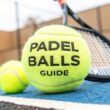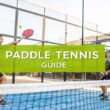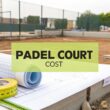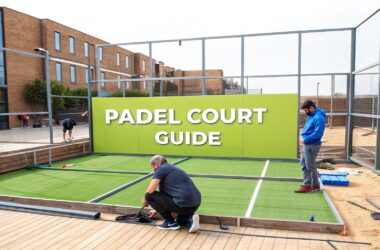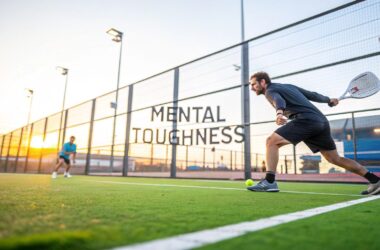Picking up a tennis racket for the first time is exciting, but walking into a shop and seeing a wall of them can feel a little overwhelming. Let's be honest, it doesn't need to be that complicated.
The perfect racket for beginners boils down to a few simple things: it should be lightweight (we're talking under 11 ounces), have a generous head size (over 100 sq inches), and have a "head-light" balance. This combo is your secret weapon for learning the game. It helps you build good habits from the get-go, prioritize control over wild power, and keep your arm happy.
Why Your First Racket Choice Matters
Choosing the right racket is about way more than just having the equipment to play. It’s about giving yourself the best possible shot at falling in love with the game.
Grabbing the wrong one—maybe a heavy, stiff model designed for a pro—is a recipe for frustration. It can lead to sloppy technique and even nasty injuries like tennis elbow. Forget all the super-technical jargon you hear pros talking about for a minute. Your only goal right now is to find a tool that makes hitting the ball feel good and helps you improve with every session.
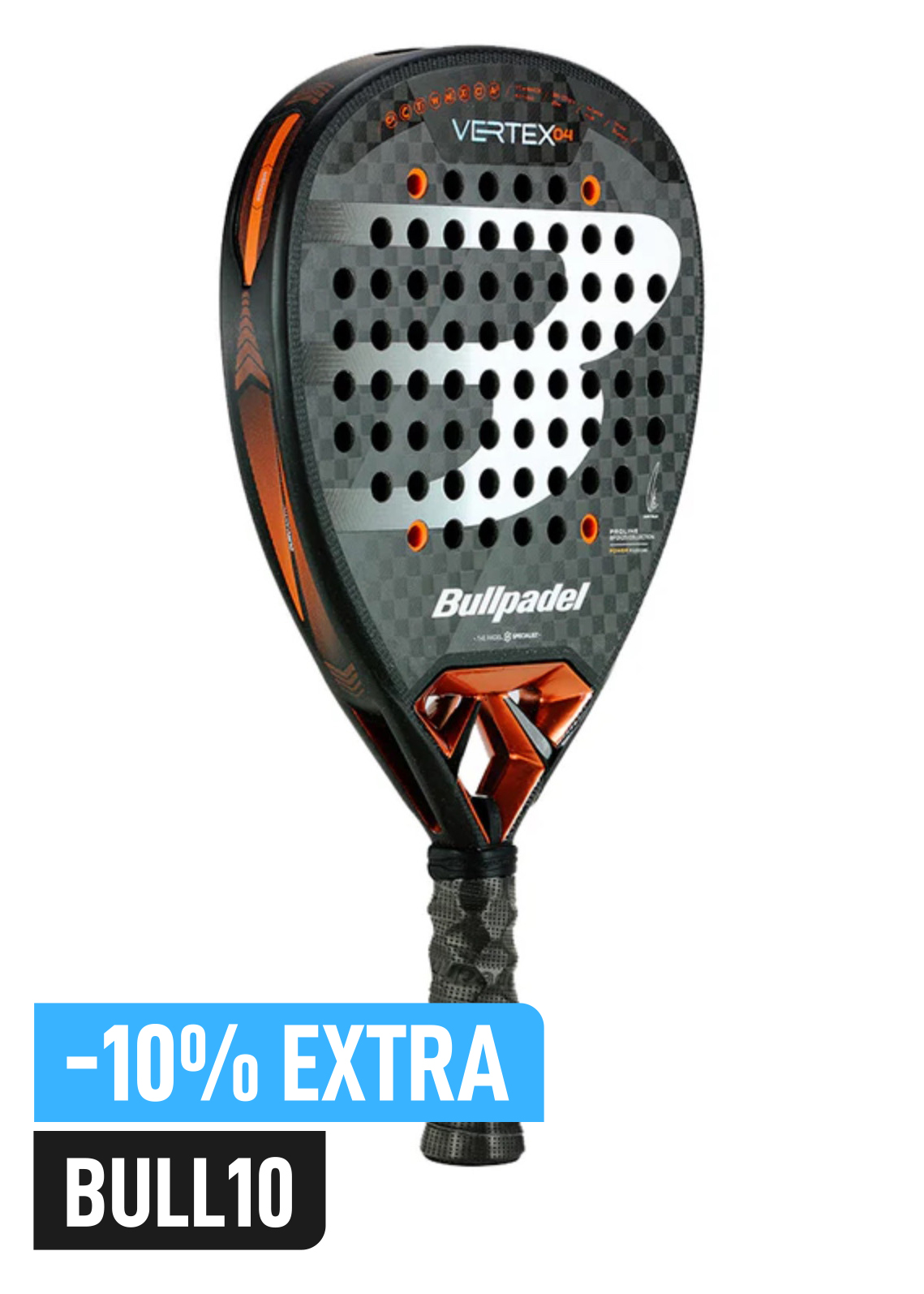
Buy the best padel gear to level up your next game!
CHECK OUT this deal from Padel Market!Get ready to take your game to the next level with the latest padel gear from Padel Market! Fast EU and Worldwide Shipping
Think of it like learning to drive. You wouldn't start in a Formula 1 car; you'd want something easy to handle and forgiving when you make a mistake. A beginner's tennis racket is the exact same idea. It’s built to make the learning curve smoother and a lot more fun.
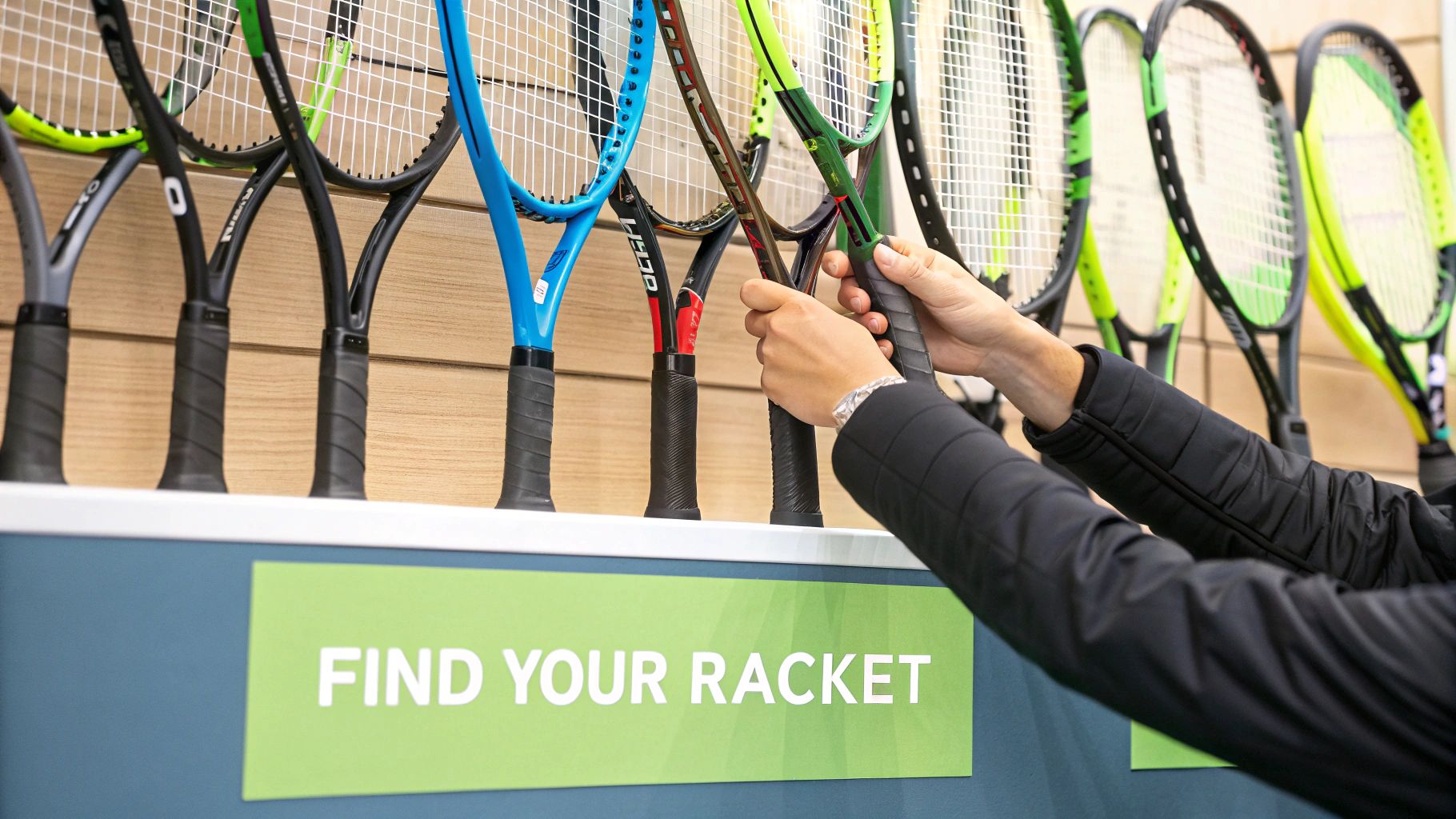
Key Focus Areas For New Players
To cut through the noise, just focus on these three characteristics. They'll have the biggest impact on how you feel on the court.
- Forgiveness: A bigger head size gives you a larger "sweet spot." This is huge. It means even when you don't hit the ball perfectly in the center, the racket still does most of the work for you. More forgiveness equals more confidence and longer rallies.
- Comfort: Lighter rackets are just plain easier on your arm. As your muscles get used to the new movements of tennis, a comfortable frame reduces the risk of strain.
- Control: Maneuverability is everything when you're starting out. A head-light balance lets you swing freely and get the racket into position without feeling like you're dragging it around.
This guide is all about getting you the right gear so you can focus on the fun part—playing. While a new racket won't turn you into a pro overnight, the right one makes the journey so much better.
And hey, if you're getting into other racket sports, it's interesting to see how the gear changes. You can check out some great info on the latest in padel racket news and reviews to see just how different the equipment can be.
The best beginner racket isn't the most expensive or powerful one—it's the one that feels like a natural extension of your arm, giving you the confidence to swing freely and fall in love with the game.
To make things even simpler, I've put together a quick-reference table. Think of it as your cheat sheet for what to look for when you're shopping.
Beginner Racket At a Glance Key Specifications
| Racket Feature | Ideal Range for Beginners | Why It Matters |
|---|---|---|
| Weight (Unstrung) | 9.5 to 11 oz (270-310g) | Lighter weight makes it easier to swing and reduces arm fatigue. |
| Head Size | 102 to 115 sq inches | A larger head provides a bigger sweet spot, making it more forgiving. |
| Balance | Head-light (more weight in handle) | Improves maneuverability and control for developing proper swing technique. |
| Beam Width | 23 to 27 mm | A thicker beam adds power and stability, helping you get the ball over the net. |
| Flexibility (RA) | 60 to 70 RA | A more flexible frame is more comfortable and easier on the arm. |
Use this table as your guide. If a racket checks these boxes, you're on the right track to finding a great first partner for your tennis journey.
Breaking Down the Padel Racket: What Are You Holding?
Before you can even think about picking the right racket, you’ve got to know what you’re looking at. Think of it like a quick tour of a car before a test drive—understanding the parts makes the whole experience way less intimidating. A padel racket has several key components, and each one plays a huge role in how it feels and performs out on the court.
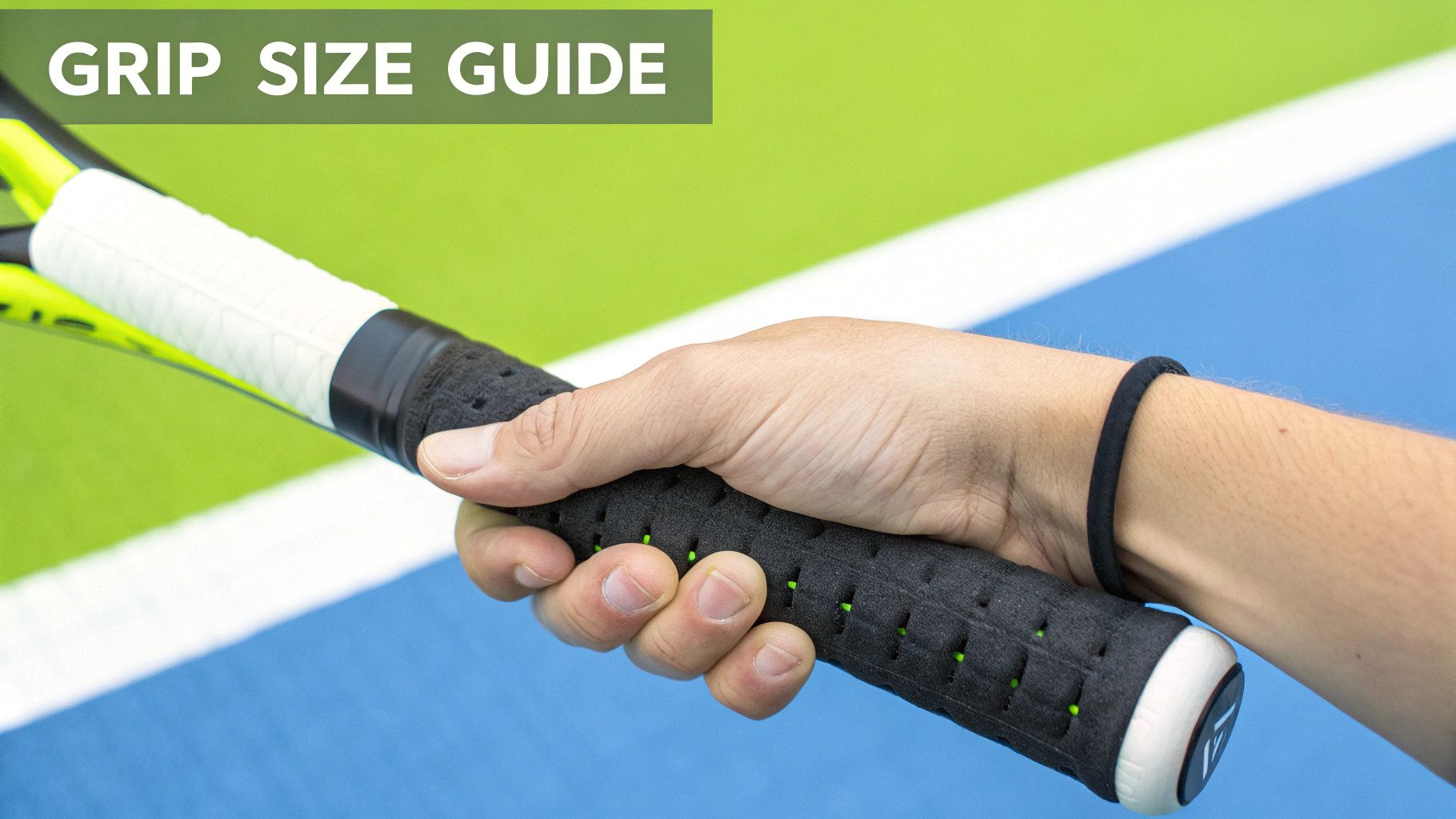
Let's start from the top. The main hitting surface is called the head. The outer edge of the head is the frame or beam. For anyone just starting out, a larger head size is your best friend because it gives you a much bigger hitting area. This prime real estate is what we call the sweet spot.
A generous sweet spot is incredibly forgiving. Seriously. It means that even if your timing is a little off and you don't hit the ball dead center, the racket still gives you a solid shot with decent power and control. That forgiveness cuts down on those frustrating mishits and helps you build confidence so much faster.
The Frame and Face
The frame itself has a critical property known as stiffness. A very stiff frame can generate a lot of power, but it can also be pretty harsh on your arm—not ideal when you're still developing your strokes. As a newcomer, look for a more flexible, softer frame. These rackets absorb more of the impact, which means more comfort and a much better feel for the ball.
The face of the racket is what makes direct contact with the ball. Unlike tennis, padel rackets have a solid face, usually made of fiberglass or carbon fiber, with holes drilled into it.
The materials used for the face and the inner core (typically EVA foam) are what give the racket its unique blend of power, control, and comfort. We'll dive deeper into this, but for a beginner, a softer foam and a fiberglass face offer a great combination of easy power and a forgiving feel.
This kind of setup helps you get the ball over the net with less effort and more control, which is the name of the game when you're learning.

Buy the best padel gear to level up your next game!
CHECK OUT this deal from Padel Market!Get ready to take your game to the next level with the latest padel gear from Padel Market! Fast EU and Worldwide Shipping
The Handle and Grip
Connecting the head to the handle is the throat and shaft. Then you have the grip, which is obviously where you hold the racket, and at the very bottom is the butt cap. The grip size is one of the most important—and most overlooked—details when picking up your first racket.
Getting the grip size right stops the racket from twisting in your hand on off-center hits and can seriously reduce the risk of injuries like tennis elbow. We’ll get into exactly how to find your perfect grip size later on, but just know it's a critical piece of the puzzle. Understanding these parts demystifies all the technical jargon you see online, helping you make a choice you’ll be happy with.
Getting the Racket Weight and Balance Right
When you're just starting out in padel, two things matter more than almost anything else when picking a racket: weight and balance. These aren't just specs on a label; they dictate how the racket feels in your hand, how easily you can swing it, and ultimately, how much control you have over the ball. Nailing this combination from day one is the secret to building a solid technique.
For anyone new to the court, the sweet spot for a racket's unstrung weight is between 9.5 and 11 ounces (that's about 270-310 grams). A racket in this range is light enough to swing without your arm feeling like jelly after ten minutes. This lets you focus on learning the proper swing instead of just wrestling with a heavy piece of equipment.
A lighter racket gives you better maneuverability, which you'll appreciate when you're trying to react quickly at the net. But be careful not to go too light, as that can lead to a flimsy feel with a lot of vibration. Your ideal weight often comes down to your personal fitness. If you're athletic, you might feel great closer to 11 ounces. If you're less used to racket sports, starting around 9.5 to 10 ounces is a smart move.
Finding the Right Balance Point
Just as important as the total weight is where that weight sits. The balance point completely changes how a racket feels and performs. Imagine holding a hammer—gripping it near the heavy head feels totally different from holding the handle, right? Same principle.
You'll come across three main types of balance:
- Head-Light: The weight is concentrated more towards the handle. This is what I recommend for virtually every beginner. It makes the head feel lighter, making the racket a breeze to swing and control.
- Head-Heavy: More weight is packed into the head. This helps generate easy power, but it's a lot tougher to control and can be a fast track to arm strain if your form isn't perfect.
- Evenly Balanced: The weight is spread out uniformly. This gives you a bit of everything—a mix of power and control—but it doesn't offer the distinct easy-swinging advantage that a head-light racket does for new players.
For someone just starting their padel journey, a head-light racket is almost always the best bet. It encourages you to develop a smooth, controlled swing, which is the foundation of a good game. To see how this concept applies across different racket designs, it's worth exploring the various types of padel rackets, as balance and maneuverability are universal principles.
Key Takeaway: A head-light racket won't do the work for you by generating massive power on its own. Instead, it forces you to learn how to create your own power with good technique—a much more valuable skill for the long haul.
The image below breaks down the key parts of a good swing, which is so much easier to learn when you have a racket that's properly weighted and balanced for a beginner.
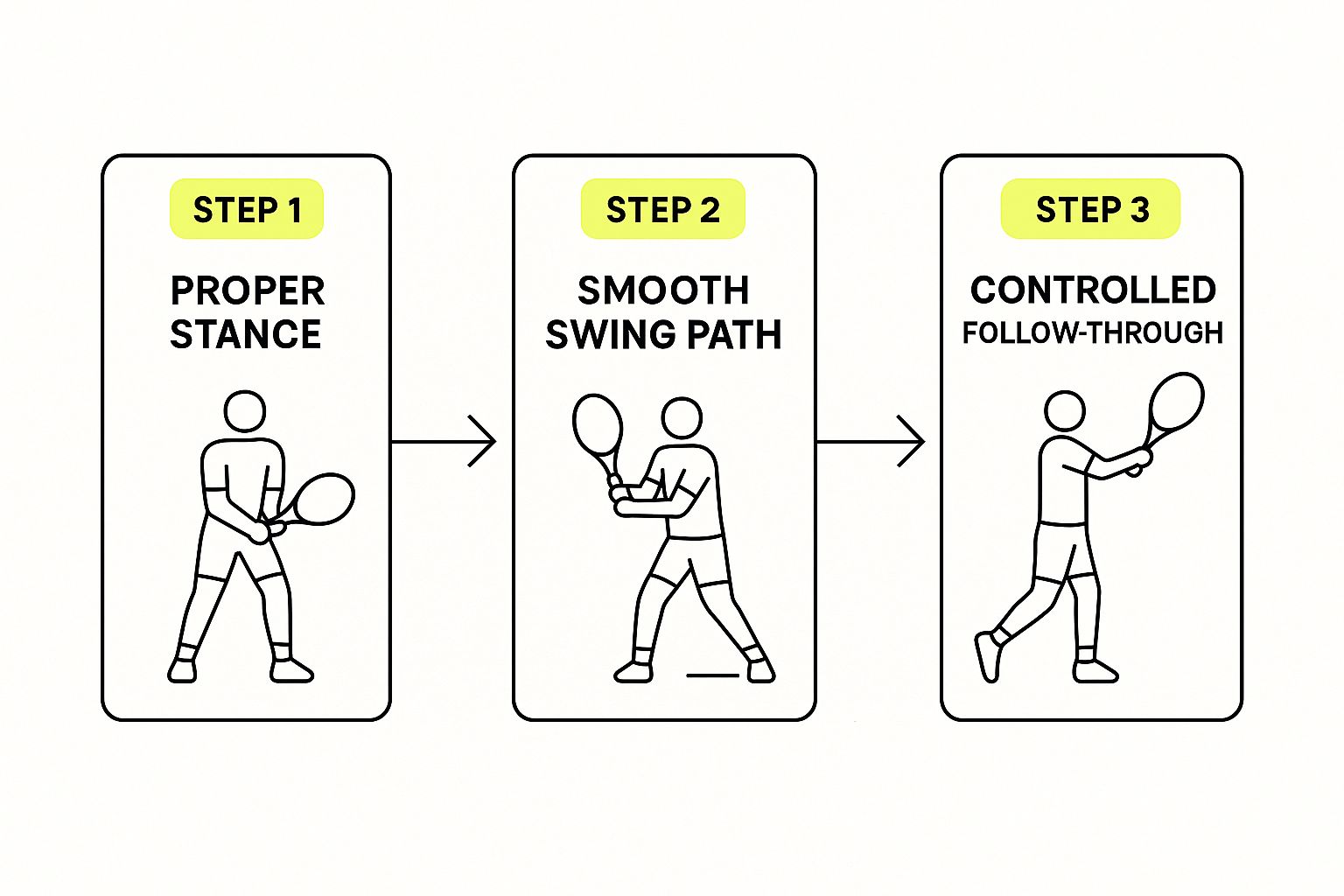
As you can see, a smooth swing path and a controlled follow-through are essential. A manageable racket helps you master both.
Why Head Size Matters for New Players
When you're just starting out, the size of your racket's head—the main hitting surface—is a total game-changer. Why? Because a larger head gives you a much bigger sweet spot. Think of the sweet spot as the most effective, forgiving part of the racket face. For a new player, it's your absolute best friend on the court.
Imagine trying to hit a bullseye on a dartboard every single time. That's what it feels like using a smaller, pro-level racket. Now, imagine your target is the entire dartboard. That's the advantage a larger head gives you—a massive margin for error. This forgiveness means fewer frustrating mishits and more satisfying rallies right from the start, which is a huge confidence booster.
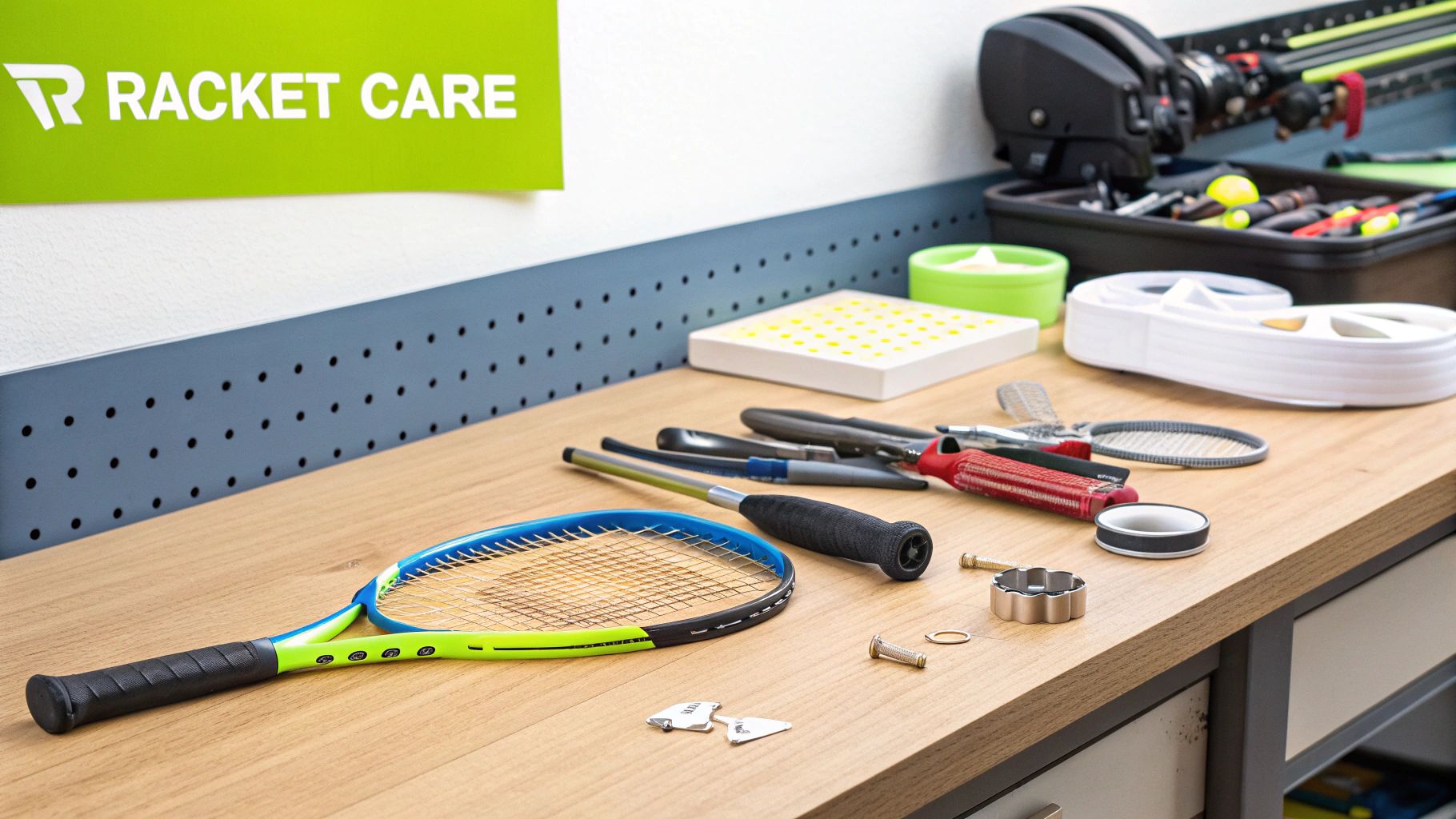
Finding the Right Head Size Range
As a beginner, you don't need to get lost in all the specs. Just focus on two main categories that offer the perfect blend of forgiveness and easy power, without making you sacrifice too much control as you learn.
- Round Shape: This is the go-to for beginners. It naturally has the largest and most centered sweet spot, making it incredibly forgiving. You'll find it much easier to make solid contact, even when your technique isn't perfect yet.
- Teardrop Shape: A great next step or for ambitious beginners. The sweet spot is a bit higher up on the racket face, offering a nice mix of power and control. It's a little less forgiving than a round racket but rewards you with more pop on your shots.
Diamond-shaped rackets? Steer clear for now. They're built for advanced players who can consistently generate their own power and hit a tiny sweet spot with precision.
A larger, more forgiving head size doesn't just make hitting the ball easier—it makes the game way more fun. When you aren't constantly worried about framing the ball, you can actually focus on your footwork, your swing, and learning the game.
The Real-World Impact on Your Game
So what's the actual difference on the court? A player using a classic round-shaped racket will find it much easier to defend shots and get the ball back over the net, even with a slower, less-developed swing. This is because the centered weight and large sweet spot do a lot of the work for you.
On the other hand, a player with a teardrop racket might feel a bit more "pop" off the face, getting more power on their smashes. However, they'll need slightly more precise contact to get that same easy, controlled feel on defensive shots from the back of the court. For a deeper dive into how racket head design influences play, our guide on understanding padel racket head shapes offers some great insights.
The popularity of these user-friendly rackets isn't just anecdotal. The global padel market is booming, reflecting a huge demand from new players. In 2023, the market was valued at USD 283.4 million and is expected to climb to USD 438.4 million by 2028. Much of this growth is fueled by recreational players looking for gear that helps them enjoy the game from day one.
Dialing in the Details: Materials and Grip Size
We've tackled the big stuff—weight, balance, shape—but now it’s time to get granular. The materials your racket is made from and the size of its grip are two details that can make or break your experience on the court. Get these right, and you'll not only play better but also sidestep common aches and pains like the dreaded tennis elbow.
When you're first starting, you'll see rackets made of everything from cheap aluminum to more advanced graphite composites. It can be tempting to grab the cheapest aluminum frame to save a few bucks, but trust me, that's one of the biggest mistakes a new player can make. Aluminum rackets are clunky, they send a nasty vibration up your arm every time you hit the ball, and they offer almost zero feel. You’ll struggle to develop any kind of real technique with one.
Why Graphite Composite is the Only Real Choice
These days, almost every decent beginner racket is made from a blend of graphite and other materials like fiberglass or titanium. This combo is the sweet spot for anyone learning the game.
- Vibration Dampening: Graphite is a champ at absorbing shock. Less vibration means your arm doesn't feel like it's been through a battle after every match. This is huge for preventing soreness and long-term injuries.
- Lightweight Strength: This material lets manufacturers build a solid, stable frame that doesn't feel like you're swinging a log. The racket is easy to handle but still feels powerful on impact.
- Better Feel: A graphite composite frame gives you much better feedback. You can actually feel where the ball hits the strings, which helps you build that all-important intuition and control over your shots.
This shift toward quality, accessible materials is happening across the entire industry. The global tennis equipment market was valued at around USD 166.1 million in 2025 and is only getting bigger, mostly thanks to new recreational players joining the sport. What's really interesting is that around 60% of first-timers buy their gear from general retailers, which makes the availability of good, affordable graphite rackets more crucial than ever. You can dig into these market dynamics in the tennis equipment industry to see how brands are stepping up to meet this demand.
Finding Your Perfect Grip Size
The grip is your one and only connection to the racket, so getting the size right is non-negotiable. If it's too small, you'll end up death-gripping the handle, leading to arm fatigue and sloppy shots. If it's too big, you won't be able to move your wrist freely, making it tough to switch grips or add any spin to the ball.
Thankfully, you don't need a fancy tool to figure this out. Here are a couple of dead-simple methods you can try right now.
The Index Finger Test: Grab the racket with your dominant hand using a standard "Eastern" grip (think of it like shaking hands with the racket). You should be able to slide the index finger of your other hand snugly into the space between the tip of your ring finger and the base of your palm. If there's a big gap, the grip is too large. If your fingers are all bunched up, it's too small.
This might seem like a tiny detail, but it makes a world of difference. The right grip allows for a relaxed yet firm hold, giving you the confidence to swing away and the control to put the ball exactly where you want it. It's the final piece of the puzzle in finding a racket that helps you truly fall in love with the game.
Common Questions About Your First Racket
Alright, so you've got the basics down on weight, balance, and all that technical stuff. But I know there are still those nagging little questions that pop up right before you hit "buy." It's totally normal.
Think of this as our final chat before you make your pick. We'll clear up the last few details so you can walk away feeling 100% confident in your choice.
Do Beginner Rackets Come With Strings?
Yes, and it's a huge plus. Almost every single racket made for beginners comes pre-strung and ready to go, right out of the box. The brands know that when you're just starting, the last thing you want to worry about is string types and tension.
The strings they put in are usually a solid, all-around synthetic gut. They’re built for a nice mix of playability and durability—perfect for getting a feel for the ball and learning your strokes. You won't need to even think about restringing for a good while.
My Advice: Don't get hung up on the factory strings. Seriously. They're more than enough for your first six months of playing. Focus on your game, and once you're playing consistently, you can dive down the rabbit hole of custom stringing.
This convenience is designed to get you on the court faster, making the whole process of starting padel that much easier and more affordable.
How Much Should I Spend on My First Racket?
You absolutely do not need to break the bank for a great first racket. For a quality frame from a reputable brand, the sweet spot is usually somewhere between $50 and $150. Anything in this range will almost certainly be a graphite composite, which gives you that perfect blend of comfort, power, and feel we talked about.
I'd be careful with the super-cheap rackets under $40. They're often clunky, heavy aluminum frames that can actually hold you back and might even lead to some arm soreness. Spending just a little more for a graphite composite racket is probably the single best investment you can make for your long-term enjoyment of the game.
Here's a quick way to think about it:
- $50 – $90: This gets you a fantastic entry-level graphite composite racket. It's perfect if you're playing casually and just getting the hang of things.
- $90 – $150: In this range, you'll find higher-end beginner-to-intermediate frames. They often have better vibration-dampening tech and just feel a bit more refined. It’s a smart buy if you know you're going to be playing regularly.
When Should I Upgrade My Racket?
Every new player looks forward to this moment, and trust me, you'll know when it's time. The biggest sign is when your skills start to outpace what your racket can do for you. This usually happens after about 6 to 12 months of playing consistently—say, two or three times a week.
You might find yourself wanting more power than the racket can give, or maybe you're craving more control for those trickier shots. As your swing gets faster and more confident, you'll be ready for a racket that rewards that good technique with higher performance.
The moment your beginner frame feels like it's holding you back instead of helping you improve? That’s your green light to start shopping for an upgrade.
Here at Padel Rumors, we're convinced that starting your padel journey with the right knowledge is just as crucial as having the right gear. Dive into our massive collection of guides and reviews to find the perfect equipment for your level and ambitions. Check it all out at https://padelrumors.pages.dev.


